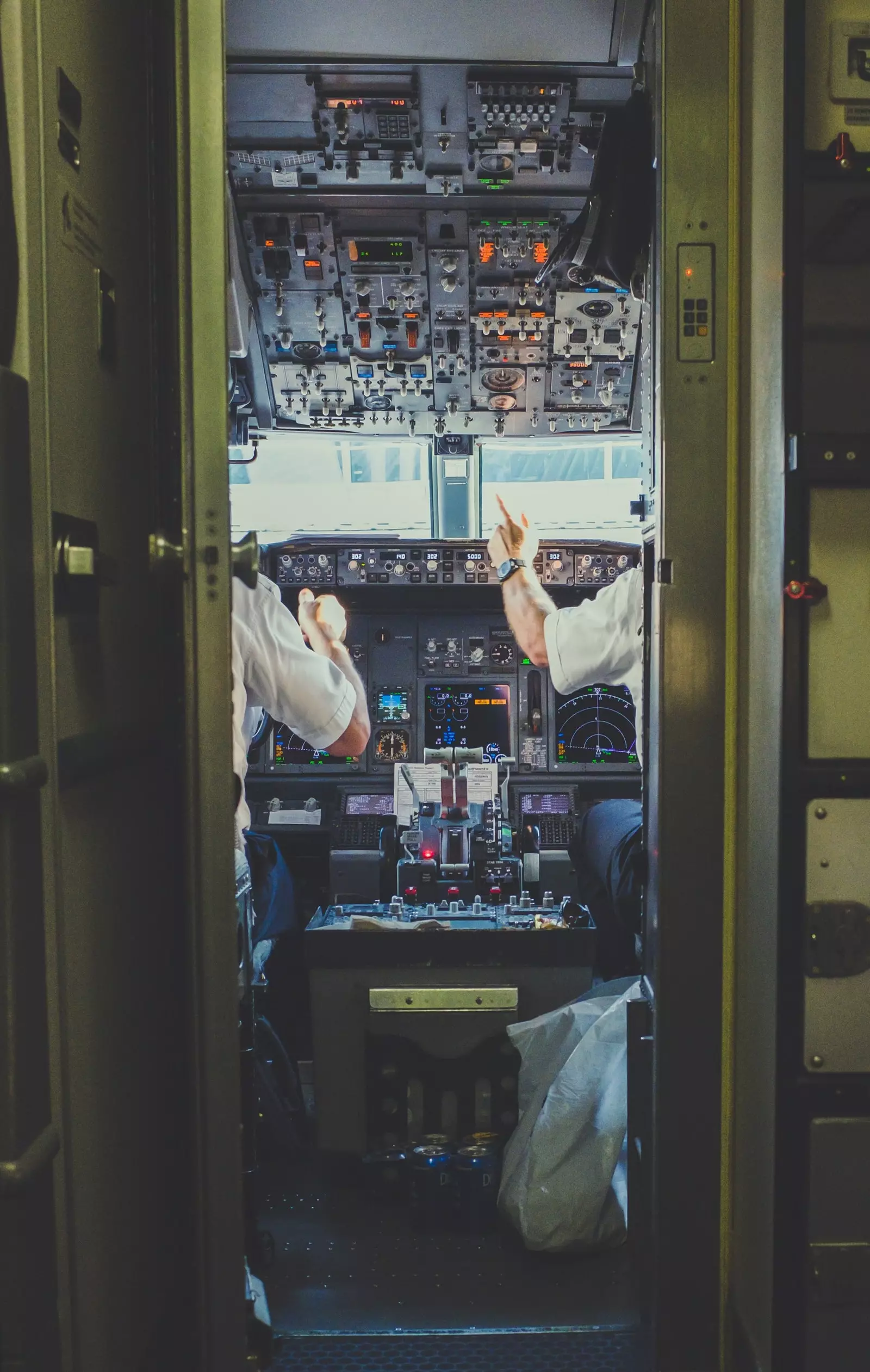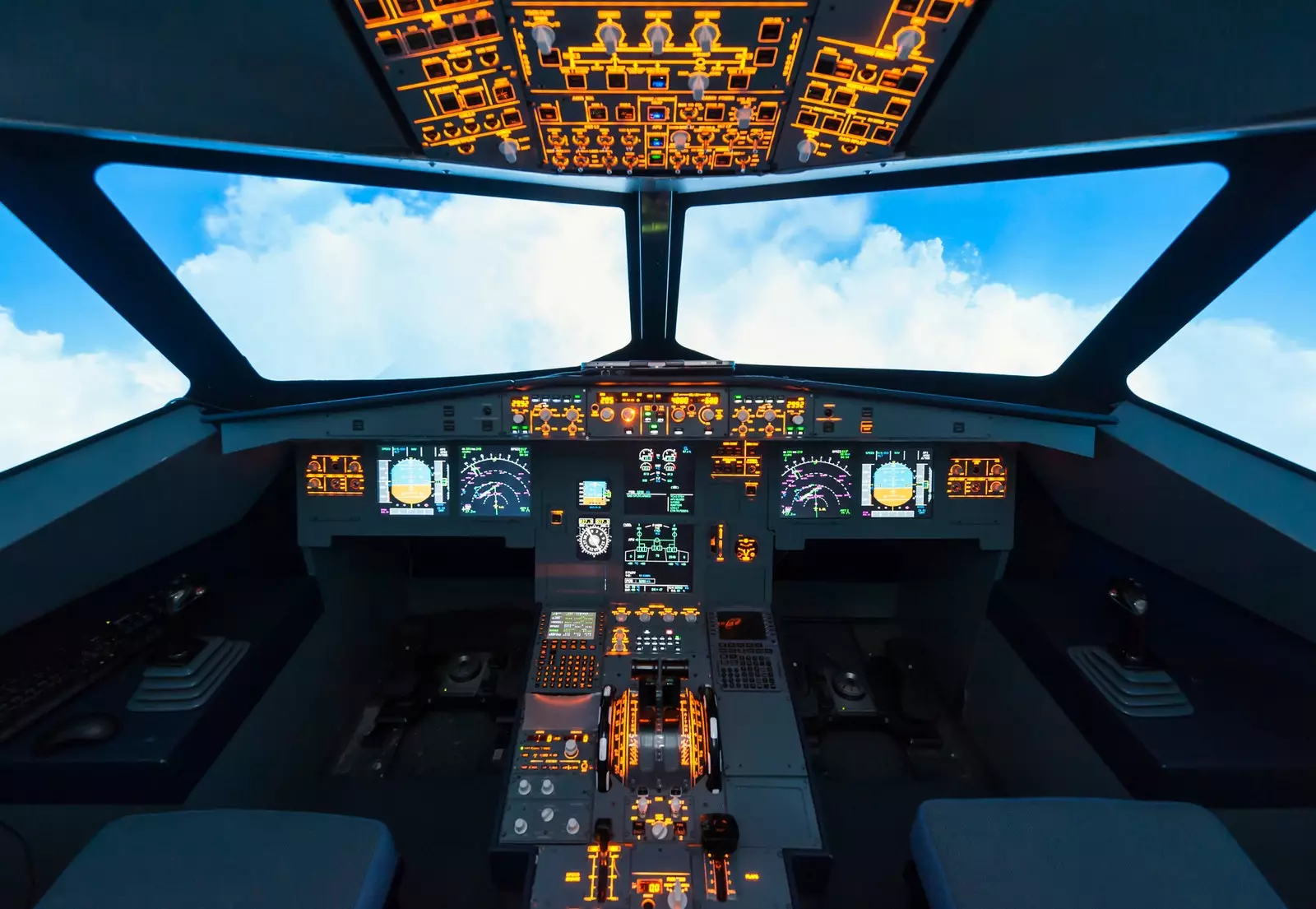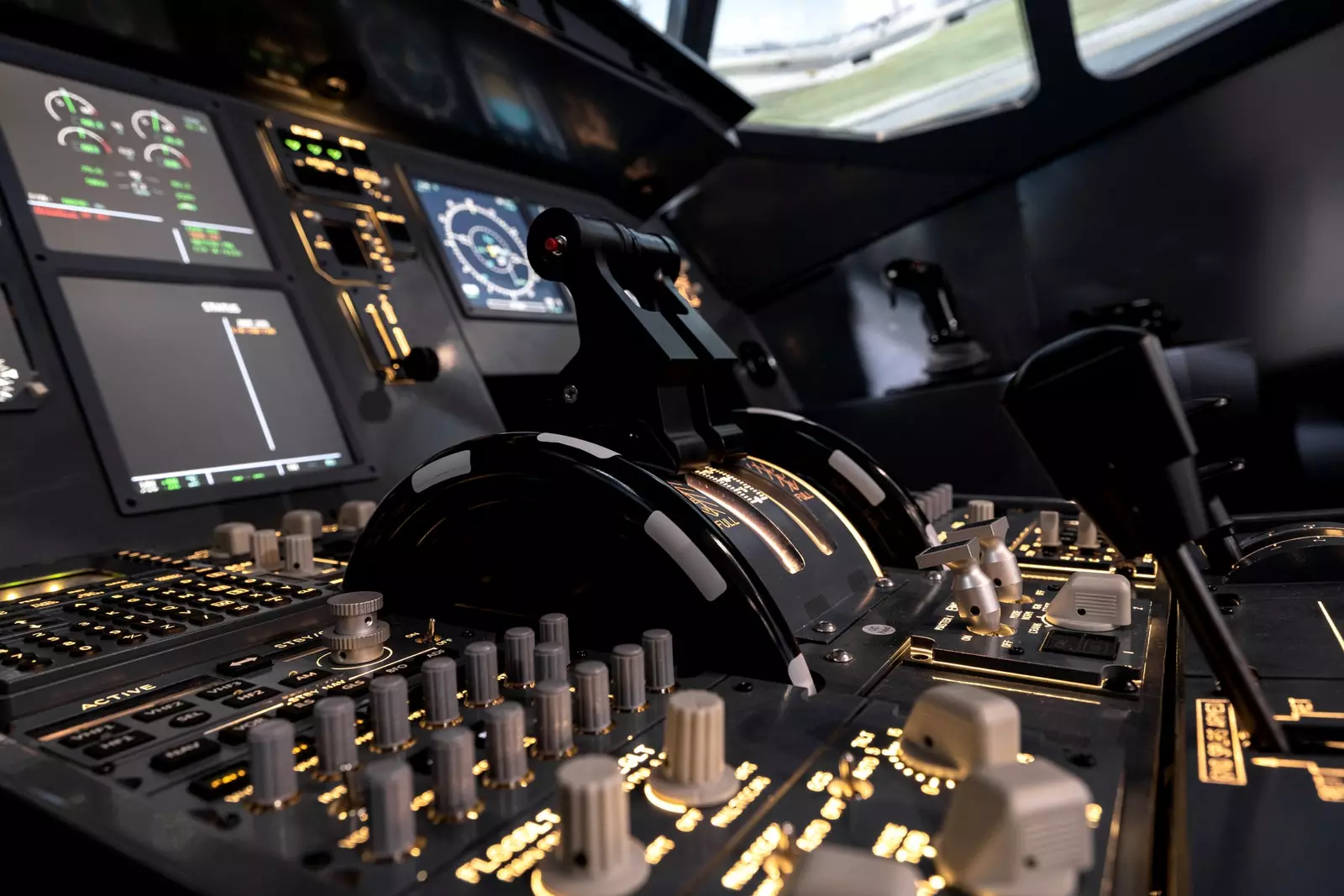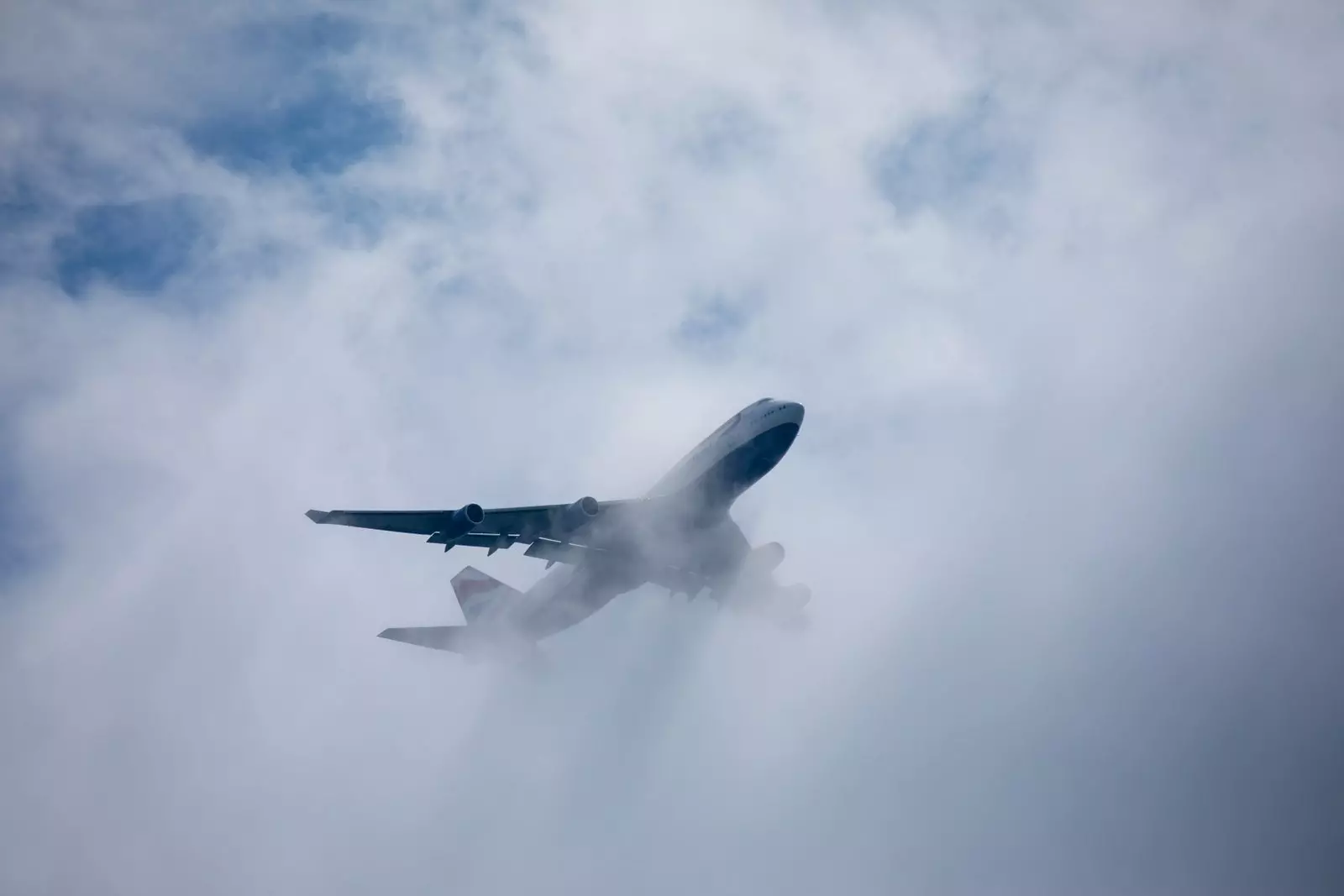The new Turkish Airlines Flight Training Center offers flight training courses for national airline staff , made up of more than 4,000 pilots and more than 10,000 flight attendants, but also to airlines around the world who come here for their training, maintenance and refreshment services.
To be a pilot It's not getting a license and that's it, you also have to maintain it. "We are obliged to pass simulators and emergency scenarios every six months and of course to approve them," Paco López, Iberia's long-haul commander, tells Condé Nast Traveler. But, What do these pilot refresher courses consist of?
The CEER Recurrent Assessment and Training Course, explains López, includes passing two EBT modules (a module consists of an evaluation session and another training session) in a period of 12 months. “Each of these sessions begins with a two-hour briefing in which, among other things, we passed a knowledge test, followed by a four-hour simulator session and we finished with an hour of briefing”. And he continues: “The simulator never stops, with which the schedules are very varied and always demanding”.

Pilot cabin.
A FLIGHT SIMULATOR OR A VIDEO GAME?
The regular training that pilots go through to always stay alert and prepared for any situation in flight It goes without a doubt through flight simulators. Commander López explains what happens inside a simulator, which beyond how much a virtual reality video game may seem, It is usually a very stressful test for the pilots. "Within the simulator we usually start with a flight as if it were really, since We bring the previous data of the flight plan, takeoff data calculations, meteorology and aircraft status. We talk on the radio as if there was someone on the other side, The same voice of the instructor always answers us that he is sitting behind us with his control panel”.
And this is when during training pilots are at the mercy of that instructor that he “can do whatever he wants during the time we are inside the simulator, from changing the technical conditions of the plane to the weather and the geographical location anywhere on the planet”.

Flight simulator.
In the approximately four hours that a pilot spends in the simulator “something usually happens that prevents us from reaching the destination and we ended up landing somewhere else after solving one or more scenarios of aircraft equipment failure, so we always practice something different”, clarifies Paco López.
Of course the courses are mandatory for all active pilots and they are regulated, in the case of Spain, by the Spanish aeronautical authority, which largely subrogates its guidelines to European legislation. But beyond the simulator, López explains, “The instructor also evaluates us in a series of competencies that are measured with values between 1 and 5 and among which areas such as the application of procedures, communication, knowledge, leadership and teamwork or problem solving and decision making”.
It is really possible to see that the air value chain works, and that what the commander says is indeed true as soon as he crosses the door of the Turkish Airlines Training Center which, although it is not the place where Iberia pilots train, it is encompasses all these universal procedures for flight safety.
THE EXPERIENCE OF LEARNING TO FLY
Arriving at the room turkish airlines flight simulator I am greeted by an impressive view, as in a huge space with high ceilings and industrial walkways meet two flight simulators, both belonging to an Airbus A320, a twin-engine aircraft designed for short and medium-range flights. I confess that I have a slight idea of what I am facing since I come with my homework done and some advice from fellow pilots, although Reallity always get over fiction.
Before even accessing the simulator I am overwhelmed by the amount of safety instructions I receive by the one who will be my flight instructor, a serving commander of the Turkish airline, in case an unforeseen event could happen at any time, from a fire in the cabin itself to a failure in the operation of the simulator. It may seem like a video game, but everything is very real here. Once inside, it's not hard to forget that I'm in a simulator since its interior is an exact replica of an A320 cabin, even many of the pieces have actually belonged to an airplane.
My instructor offers me to sit on the right-hand seat, usually occupied by the aircraft commander . I think I am even able to feel the weight of the responsibility of being at the controls of an A320 when he addresses me, in a serious and methodical way, which only makes my pulse quicken more with emotion, so that I adjust my seat so that I can clearly see the head-up display and correctly access the rest, and there are not a few, of the aircraft's controls. Once accommodated, which in no case comfortable, my instructor begins a detailed explanation around the cabin showing me all the essentials.

co-pilot position.
CABIN CREW, PREPARED FOR TAKEOFF
Before I know it we're lined up on the center line of the track, although fortunately I will not be the one to make this first takeoff. It is my instructor who at the controls of this A320 begins to accelerate down the runway while I can't take my eyes off the head-up display while I try without much success to align the aircraft symbol with the dashed line to achieve the desired ascent rate.
Turkish Airlines simulators They work 24 hours a day, seven days a week, in a system four hour slots, as explained previously by Commander López. I am not going to spend four hours here, with less than two, and after try some maneuvers like basic left and right turns I already feel exhausted.
I'm surprised by the seriousness and professionalism of my instructor that, at times, I think he forgets that I am a journalist sitting by first time at the controls of an airplane and not a pilot in full training. I managed to complete three landings without my pulse trembling (it did not happen like that at takeoff), although the issue of doing it a little more focused on the track it is something that I should practice more, as my instructor lets me know.
That the pilots are always in continuous training is evidence that Commander López is in charge of explaining: “Indeed we are always updating ourselves in all facets of the operation since it is a living industry and in constant movement for increase safety margins.

The pilot profession is as romantic as it is stressful.
And it is that in addition to these very technical courses on the handling of the plane and the day to day of the operation, López expands on the confirmed information that “We also have refresher courses on Dangerous Goods and another called CRM, which are acronyms used in many other industries and businesses, but in aviation stands for Cockpit Resource Management what we do together with TCP´s (cabin crew).
The CRM is used by the flight crew to improve the safety of each flight promoting the use of non-technical skills, such as teamwork and decision making to ensure strong situational awareness of the group in problem solving, and promotes threat and bug management.
In aviation there are no myths that are worth, beyond the cinematic Lieutenant Pete Mitchell in the movie Top Gun. Simulators and movies aside, the great responsibility involved in transporting hundreds of people daily, constant stress, cosmic radiation and lack of a normal sleep regimen make the life of pilots one of the most romantic professions that exist, but also one of the most demanding, hence your training must be continuous throughout your career.
See more articles:
- Multisensory lounges arrive at airports
- The A380 flies again (and we with it)
- The safest airlines in the world for 2022
